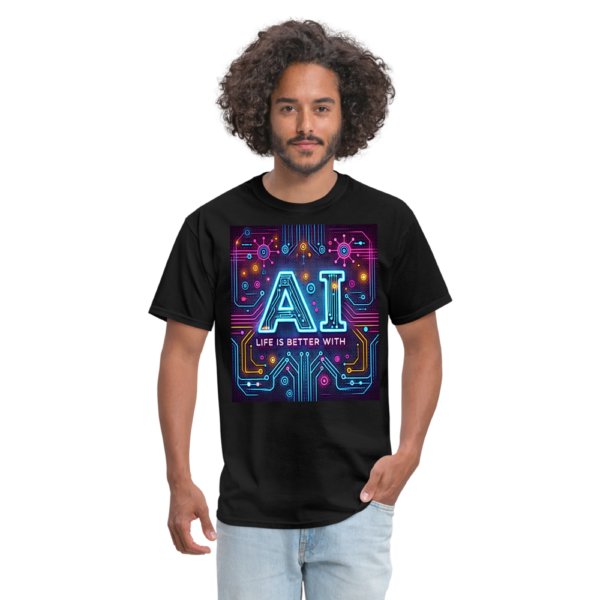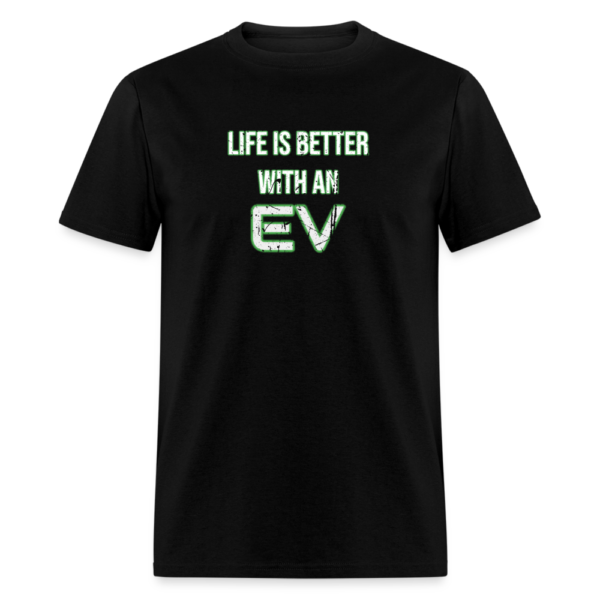Your cart is currently empty!
Tag: Elon Musk
🚀 xAI Unleashes the ‘Unhinged’ Grok Voice Beta: A Cosmic Leap in Conversational AI! 🌌
xAI has once again captured the attention of tech enthusiasts and casual users alike with his latest innovation on the Grok app. The early beta version of Grok voice, now available exclusively for Premium+ and SuperGrok subscribers, is setting the digital world abuzz with its innovative features and playful, conversational style. In this post, we dive into what makes this beta release so compelling, how its ‘unhinged’ mode is changing the game for interactive AI, and why this could be the beginning of a new era in both educational and entertainment technology.
🌟 A Bold New Frontier in Conversational AI
Elon Musk’s foray into conversational AI through the Grok app is a clear demonstration of his vision to merge advanced technology with everyday user experiences. The Grok voice beta is not just an upgrade; it’s a revolution. This feature offers a unique blend of humor, creativity, and technical prowess that sets it apart from traditional voice assistants. It aims to create a more engaging and dynamic interaction, where users can experience a range of voice personalities that adapt to their conversational style.
The introduction of the beta version marks a significant milestone in the ongoing evolution of AI. With its ‘unhinged’ mode, Grok voice is designed to push boundaries and offer interactions that are both entertaining and intellectually stimulating. This mode allows for a variety of voice tones and attitudes, making every conversation feel fresh and unpredictable. Whether you’re seeking a bit of light-hearted banter or a deep dive into a complex topic, Grok voice is ready to respond in ways that challenge conventional AI behavior.
🤖 The Power of the ‘Unhinged’ Mode
One of the most talked-about aspects of this new release is the so-called ‘unhinged’ mode. This mode is characterized by its engaging, humorous, and sometimes delightfully quirky personality. Unlike typical AI assistants that follow rigid programming, Grok voice in ‘unhinged’ mode offers a more natural and spontaneous dialogue. This flexibility is particularly appealing to users who enjoy interacting with technology that feels more human, creative, and less scripted.
Users have reported that the ‘unhinged’ mode not only provides laughter and entertainment but also offers surprising educational insights. Imagine an AI that can switch between witty repartee and detailed explanations on a wide range of subjects—from astrophysics to culinary arts. This dual capability makes Grok voice an ideal companion for anyone eager to learn in a fun, interactive way.
Moreover, the ‘unhinged’ mode introduces a new layer of personalization. As you interact with the AI, it seems to adapt and mirror your conversational style, creating a unique experience every time. This adaptability ensures that no two interactions are the same, fostering a sense of novelty that keeps users coming back for more.
🌐 Integration of Grok Voice with Daily Life
Beyond its entertainment value, Grok voice has significant potential as a practical tool in daily life. Early adopters are already sharing stories of how the AI has helped them tackle everyday challenges—from organizing schedules to brainstorming creative ideas. The integration of voice personalities into the Grok app opens up exciting possibilities for both professional and personal use.
For professionals, Grok voice can serve as an intelligent assistant that helps manage tasks, set reminders, and even generate creative content. Its conversational abilities make it a valuable asset during brainstorming sessions, where its unpredictable yet insightful responses can spark new ideas and innovative solutions. This could be particularly useful for content creators, marketers, and educators who are constantly seeking fresh perspectives and novel approaches.
On a personal level, the engaging nature of Grok voice makes it an ideal companion for those looking to add a little fun to their daily routines. Whether you need a quick burst of motivation, a humorous take on a mundane task, or an educational nugget of wisdom, this new feature is equipped to deliver. The seamless integration of Grok voice into the Grok app highlights how advanced AI can be both practical and enjoyable, bridging the gap between technology and everyday life.
🎨 A Symbolic Update: Elon Musk’s New Profile Picture
In tandem with the launch of Grok voice, Elon Musk has updated his profile picture to reflect a deep connection with the Grok ecosystem. This new visual identity is more than just a cosmetic change—it symbolizes the blending of advanced technology with cosmic themes, a recurring motif in Musk’s vision for the future. The updated profile picture resonates with fans, signaling that Musk is not just a leader in tech innovation but also a creative force in redefining how we interact with digital platforms.
This change in Musk’s public image is indicative of his commitment to pushing boundaries and exploring uncharted territories in AI. By aligning his personal brand with Grok, Musk reinforces the idea that the future of technology is not just about functionality but also about creating a sense of wonder and connection. The cosmic themes represented in his new profile picture serve as a visual metaphor for the limitless possibilities that lie ahead, inviting users to embark on this exciting journey with him.
🧠 Educational Potential and Beyond
One of the most exciting prospects of the Grok voice beta is its potential as an educational tool. Users have been quick to highlight how the AI can teach various skills in a manner that is both engaging and effective. Imagine having a personal tutor that not only provides detailed explanations but does so with humor and a touch of unpredictability. This capability could transform the way we approach learning, making education more accessible and enjoyable for people of all ages.
The conversational nature of Grok voice means that learning becomes a two-way interaction. Users can ask questions, explore complex topics, and receive responses that are tailored to their specific needs. This personalized learning experience is a significant departure from traditional educational methods, which often rely on static content and one-size-fits-all approaches. By leveraging the power of AI, Grok voice promises to deliver a more dynamic and responsive educational environment.
Moreover, the potential applications extend far beyond conventional learning. From language practice to skill development in areas like programming, music, or art, the possibilities are endless. Early feedback suggests that users see Grok voice as a versatile tool that can help them acquire new competencies and refine existing ones. This dual role of providing both entertainment and education positions Grok voice as a truly innovative feature that caters to the diverse needs of its user base.
🔥 Community Response and the Future of AI Integration
The response from the tech community and everyday users has been overwhelmingly positive. Many have lauded the innovation behind Grok voice, especially its ability to blend humor with practical functionality. The interactive and sometimes unpredictable nature of the ‘unhinged’ mode has sparked numerous conversations online, with users sharing their unique experiences and creative ways of utilizing the feature.
Social media platforms are abuzz with discussions about the new beta, and the community is actively sharing tips, tricks, and feedback. This vibrant interaction not only highlights the feature’s popularity but also underscores the importance of user input in shaping the future iterations of the app. The integration of AI in daily interactions is rapidly becoming a cornerstone of modern digital communication, and Grok voice is at the forefront of this exciting transformation.
As AI continues to evolve, the innovations introduced in Grok voice serve as a preview of what the future might hold. The emphasis on user engagement, humor, and education could very well redefine how we perceive and interact with technology. For enthusiasts and skeptics alike, the successful integration of Grok voice is a clear indicator that the future of conversational AI is bright, dynamic, and full of potential.
💬 Join the Conversation: Comment and Share!
We would love to hear your thoughts on Elon Musk’s latest beta release! How do you feel about the ‘unhinged’ mode of Grok voice? Have you tried interacting with different voice personalities, and if so, what was your experience like? Let us know in the comments below and share this post with your friends and fellow tech enthusiasts. Your feedback is invaluable in driving the conversation forward and helping us understand what features you find most exciting in this new era of AI.
🚀 Final Thoughts
Elon Musk’s introduction of the Grok voice beta on the Grok app represents a major step forward in the realm of conversational AI. With its innovative ‘unhinged’ mode, engaging personality, and significant educational potential, this feature is poised to revolutionize how we interact with digital assistants. The updated profile picture that Musk has adopted further underscores his commitment to blending advanced technology with imaginative, cosmic themes.
Whether you’re a tech professional looking for a new tool to enhance your productivity or a casual user seeking entertainment and learning opportunities, Grok voice offers something for everyone. Its ability to adapt to different conversational styles and deliver personalized experiences makes it a standout feature in today’s competitive digital landscape.
As we continue to witness rapid advancements in AI technology, one thing is clear: the future is here, and it’s more interactive, engaging, and dynamic than ever before. Don’t forget to comment with your thoughts and share this post to spread the word about this groundbreaking innovation. Together, we can shape the future of technology, one conversation at a time!
Life Is Better With AI Unisex Classic T-Shirt
$19.99Life Is Better With AI Unisex Classic T-Shirt. Celebrate the future of technology with the ‘Life Is Better With AI’ Unisex Classic T-Shirt! Comfortable, stylish, and perfect for AI enthusiasts, this shirt is a must-have for anyone who loves innovation and modern design.
-

Hungry and Humble Football Player Flapping Arms Touchdown Celebration Unisex Classic T-Shirt #philly
$19.99 Select options This product has multiple variants. The options may be chosen on the product page -

Africatown in Philly Phrase Unisex Classic T-Shirt
$13.99 Select options This product has multiple variants. The options may be chosen on the product page -

Vintage Funny Cat Selfie UFO Alien Invasion Unisex Classic T-Shirt
$13.99 Select options This product has multiple variants. The options may be chosen on the product page -

Vintage Philly Underdogs German Shepherds Unisex Classic T-Shirt
$9.99 Select options This product has multiple variants. The options may be chosen on the product page
————————————————
We use AI GPT Chatbots to help with our content and may get some things wrong.
————————————————-
-
🚀🤖 Elon Musk’s xAI Unveils Grok 3: The Future of Smart AI and Tesla Voice Integration? 🤖🚀
Welcome to an exciting new chapter in the evolution of artificial intelligence! Elon Musk’s innovative company xAI is preparing to change the game once again with the unveiling of Grok 3, a next-generation AI model that promises to be the smartest AI on the planet. Scheduled for a live demo on Monday night at 8 p.m. Pacific Time, this event is already generating buzz in the tech community. If you’re passionate about AI breakthroughs and the future of smart technology, this is one story you won’t want to miss!
A Quantum Leap in AI Technology
Grok 3 is not just an incremental upgrade from its predecessor—it’s a monumental leap forward. With training powered by an astonishing 100,000 NVIDIA H100 GPUs, Grok 3 has been fine-tuned with an unprecedented level of computational power. This level of training indicates that the model is designed to handle complex tasks and deliver responses that are more accurate, insightful, and human-like than ever before.
The sheer scale of hardware used in its training suggests that xAI is targeting a significant evolution in AI capabilities. This model has been built to process and understand language, context, and nuanced information at levels that are expected to rival or even surpass current market offerings. Whether you’re an AI enthusiast, a tech investor, or simply curious about the future of technology, Grok 3’s potential is bound to spark a wave of interest and discussion.
Innovative Features and Advanced Integration
One of the most exciting aspects of Grok 3 is its introduction of advanced features such as voice mode. Imagine interacting with an AI assistant using nothing but your voice, integrated seamlessly into your everyday tech ecosystem. In the near future, this feature is set to become a core component of Tesla’s user interface, further blurring the lines between automotive technology and artificial intelligence.
This integration into Tesla vehicles marks a revolutionary step forward. Picture a scenario where you’re driving your Tesla and can interact with Grok 3 effortlessly. Whether it’s getting real-time updates about your route, managing entertainment options, or even troubleshooting on the fly, the voice mode feature promises to redefine convenience and connectivity on the road. For fans of classic sci-fi, this futuristic interface might even evoke memories of iconic AI systems like KITT from Knight Rider, creating a sense of nostalgia mixed with cutting-edge innovation.
The Community Reacts: Excitement, Expectations, and Healthy Skepticism
In the fast-paced world of technology, new announcements are met with a spectrum of reactions. The news of Grok 3 has stirred both excitement and a fair share of skepticism among tech enthusiasts. On one hand, many are thrilled at the prospect of interacting with an AI that is marketed as the smartest on Earth. They eagerly anticipate a demonstration of its capabilities, particularly the voice integration in Tesla’s UI which is expected to offer a unique, interactive experience.
On the other hand, some industry experts advise a cautious approach. With the rapid pace of AI advancements, it is natural to have questions regarding the real-world performance and reliability of such a sophisticated system. Critics wonder whether Grok 3 will live up to its lofty claims during the live demo, and whether it can seamlessly integrate with existing technologies without major hiccups. These discussions highlight a healthy balance between excitement for the future and realistic expectations about the limitations of emerging technologies.
Pricing and Value: Grok Pro, Think, and DeepSearch Modes
Beyond its cutting-edge capabilities, Grok 3 is also set to introduce an attractive pricing model. The premium version, Grok Pro, is priced at $300 per year—a competitive rate considering the advanced features it offers. Grok Pro is not just about enhanced processing power; it includes exclusive modes such as Think and DeepSearch, which are designed to further enhance the user experience.
The Think mode is crafted to provide more in-depth analysis and reasoning capabilities, making it an ideal tool for professionals who require detailed insights and data-driven recommendations. Meanwhile, the DeepSearch mode is optimized for handling complex queries and retrieving information from vast data sets quickly and efficiently. These additional features could prove indispensable for businesses, researchers, and tech-savvy individuals looking to leverage AI in their daily operations.
What to Expect During the Live Demo
The upcoming live demo is set to be an event that could reshape our understanding of what AI is capable of. Scheduled for Monday night at 8 p.m. PT, this demonstration will likely provide a first-hand look at Grok 3 in action. Key moments to watch for include:
- Voice Mode in Action: Expect to see live interactions where users can control and communicate with the AI using natural language commands. This will be particularly exciting for Tesla enthusiasts, as it hints at a future where your car becomes a smart companion capable of assisting with a variety of tasks.
- Performance Under Pressure: With such a high number of NVIDIA H100 GPUs powering its training, it will be interesting to see how Grok 3 handles complex tasks in real-time. The demo could offer insights into the model’s speed, accuracy, and overall performance.
- Integration and Usability: The practical aspects of integrating this AI into everyday technology, particularly Tesla’s UI, will be a major highlight. Observing how smoothly Grok 3 can blend with existing systems will be key to understanding its future impact on the consumer tech market.
The Road Ahead: Impact and Future Developments
The unveiling of Grok 3 is more than just a product launch; it’s a signal of the direction in which artificial intelligence is headed. With integration into platforms like Tesla’s UI, the future is looking increasingly interconnected. This development could pave the way for a new generation of AI assistants that are not only more intelligent but also deeply integrated into our daily lives.
Looking ahead, there are several potential areas where Grok 3 might have a profound impact:
- Smart Vehicles: As Tesla works to incorporate Grok 3 into its vehicles, we might see a transformation in the automotive industry. AI assistants could handle everything from navigation to in-car entertainment, making driving a more connected and convenient experience.
- Business Applications: For industries that rely heavily on data analysis and decision-making, features like Think and DeepSearch modes could revolutionize the way businesses operate. The ability to quickly process vast amounts of data and provide actionable insights could become a game-changer.
- Consumer Technology: Beyond vehicles, Grok 3’s advanced capabilities might soon be integrated into smart home devices, personal assistants, and even wearable technology. This could lead to a more interconnected ecosystem where AI plays a central role in managing our daily routines.
- Education and Research: With its ability to understand and process complex queries, Grok 3 could become an invaluable tool in educational settings and research environments. Imagine students and researchers having access to an AI that can provide in-depth explanations and support their learning endeavors in real-time.
Join the Conversation: Comment and Share Your Thoughts!
We want to hear from you! What do you think about the upcoming live demo of Grok 3? Are you excited about the potential integration with Tesla’s UI and the promise of voice mode? Or do you share the skepticism of some tech experts regarding the real-world performance of such advanced AI? Your thoughts and opinions are invaluable, and we invite you to join the conversation in the comments section below.
Don’t forget to share this post with your friends, colleagues, and anyone interested in the latest breakthroughs in AI technology. By spreading the word, you help build a community of informed enthusiasts who can appreciate and critically analyze the rapid developments in artificial intelligence.
Final Thoughts
Elon Musk’s xAI is once again pushing the boundaries of what’s possible in the world of AI. Grok 3, with its record-breaking training infrastructure and advanced features, is poised to make a lasting impact on both the tech industry and everyday life. As we eagerly await the live demo on Monday night, the blend of excitement and cautious optimism reflects the broader sentiment surrounding breakthrough technologies.
From its high-powered training using 100,000 NVIDIA H100 GPUs to its innovative voice mode integration with Tesla vehicles, Grok 3 represents a bold step forward. Whether you are a die-hard tech enthusiast, a Tesla fan, or someone who loves keeping up with the latest in AI, there’s no doubt that Grok 3 is set to capture the attention of many.
So, mark your calendars, tune in at 8 p.m. PT on Monday, and be prepared to witness the future of smart AI. Remember to comment below with your thoughts and share this post to keep the conversation going. The era of Grok 3 is upon us, and it’s time to explore a world where artificial intelligence and everyday technology converge in spectacular ways.
Stay curious, stay informed, and join us as we venture into the next frontier of AI innovation!
Life Is Better With AI Unisex Classic T-Shirt
$19.99Life Is Better With AI Unisex Classic T-Shirt. Celebrate the future of technology with the ‘Life Is Better With AI’ Unisex Classic T-Shirt! Comfortable, stylish, and perfect for AI enthusiasts, this shirt is a must-have for anyone who loves innovation and modern design.
-

Hungry and Humble Football Player Flapping Arms Touchdown Celebration Unisex Classic T-Shirt #philly
$19.99 Select options This product has multiple variants. The options may be chosen on the product page -

Africatown in Philly Phrase Unisex Classic T-Shirt
$13.99 Select options This product has multiple variants. The options may be chosen on the product page -

Vintage Funny Cat Selfie UFO Alien Invasion Unisex Classic T-Shirt
$13.99 Select options This product has multiple variants. The options may be chosen on the product page -

Vintage Philly Underdogs German Shepherds Unisex Classic T-Shirt
$9.99 Select options This product has multiple variants. The options may be chosen on the product page
————————————————
We use AI GPT Chatbots to help with our content and may get some things wrong.
————————————————-
Bruh, Did Wernher von Braun Predict @ElonMusk ‘s Mars Mission in 1953? Exploring “The Mars Project”
In 1953, Wernher von Braun, a pioneering rocket scientist, published “The Mars Project,” a seminal work that laid the groundwork for human exploration of Mars. This publication is often confused with his science fiction novel, “Project Mars: A Technical Tale,” written in 1949 but published posthumously in 2006. The latter envisions a human mission to Mars and intriguingly references a leader titled “Elon.”
The Mars Project: A Visionary Blueprint
“The Mars Project” is recognized as the first technical study on the feasibility of a human mission to Mars. Von Braun meticulously detailed the challenges and possibilities of such an expedition, proposing a fleet of ten spacecraft manned by a crew of 70 for a round-trip journey lasting approximately two years and 239 days. His comprehensive approach encompassed spacecraft design, mission architecture, and the scientific objectives of Mars exploration.
Project Mars: A Technical Tale
In “Project Mars: A Technical Tale,” von Braun ventured into science fiction, crafting a narrative set in the 1980s where humans embark on their first mission to Mars. The novel delves into the technical and social aspects of space travel, reflecting von Braun’s visionary ideas. Notably, in Chapter 24 titled “How Mars is Governed,” he describes the Martian government led by an individual referred to as the “Elon.” This detail has sparked considerable intrigue, given its uncanny resemblance to Elon Musk’s current endeavors in space exploration.
The “Elon” Connection
The term “Elon” in von Braun’s novel has led to widespread speculation about a prophetic link to Elon Musk, the founder of SpaceX, who is actively pursuing the colonization of Mars. Musk himself has acknowledged this coincidence, humorously engaging with the idea on social media. It’s important to note that in the context of the novel, “Elon” refers to a title rather than a personal name. Nevertheless, the parallel is striking and has fueled discussions about the prescience of von Braun’s vision.
Von Braun’s Enduring Influence
Wernher von Braun’s contributions have had a lasting impact on space exploration. His technical proposals in “The Mars Project” have been regarded as foundational, with aspects of his mission architecture still considered valid today. The publication of “Project Mars: A Technical Tale” further showcases his ability to blend technical expertise with imaginative storytelling, inspiring future generations to look to the stars.
Conclusion
The intersection of von Braun’s mid-20th-century writings and contemporary space exploration efforts underscores the enduring relevance of his work. The mention of an “Elon” leading Martian settlers in his science fiction novel adds a fascinating layer to his legacy, prompting reflection on the visionary nature of his ideas.
We invite you to share your thoughts on von Braun’s vision and its connection to today’s space exploration initiatives. Do you think his work was prophetic, or is this merely a coincidence? Join the conversation by leaving a comment below and sharing this article with others interested in the history and future of space travel.
Flight To Mars Phrase Unisex Classic T-Shirt
$13.99Flight To Mars Phrase Unisex Classic T-Shirt. The Flight To Mars Phrase Unisex Classic T-Shirt is a stellar addition to any wardrobe. Featuring a bold design inspired by interplanetary exploration, this shirt is crafted from soft, durable fabric for all-day comfort. Perfect for space enthusiasts, sci-fi fans, or anyone who dreams of the stars, it’s a must-have for casual outings or themed events.
-

Hungry and Humble Football Player Flapping Arms Touchdown Celebration Unisex Classic T-Shirt #philly
$19.99 Select options This product has multiple variants. The options may be chosen on the product page -

Africatown in Philly Phrase Unisex Classic T-Shirt
$13.99 Select options This product has multiple variants. The options may be chosen on the product page -

Vintage Funny Cat Selfie UFO Alien Invasion Unisex Classic T-Shirt
$13.99 Select options This product has multiple variants. The options may be chosen on the product page -

Vintage Philly Underdogs German Shepherds Unisex Classic T-Shirt
$9.99 Select options This product has multiple variants. The options may be chosen on the product page
————————————————
We use AI GPT Chatbots to help with our content and may get some things wrong.
————————————————-
-
Viral Mystery: California Residents Witness Unexplained Lights in the Sky
California woke up to a wave of speculation and intrigue on the morning of January 24, 2025, as residents across the state reported sightings of mysterious lights in the sky. From San Francisco’s bustling cityscape to the serene plains of the Central Valley and even parts of Southern California, countless Californians found themselves gazing upward at what appeared to be glowing, otherworldly formations.
The Phenomenon
The lights, described as bright and luminous, took on various shapes and patterns that left onlookers both mesmerized and perplexed. Early reports flooded social media platforms, with videos and photos showcasing these glowing formations lighting up the early morning sky. The most common descriptions included linear streaks of light that seemed to pulse and shift, giving an almost choreographed display that captivated viewers.
Theories Sparked Across Social Media
As expected, the internet went into overdrive, with theories ranging from the fantastical to the scientific. Some users speculated about the possibility of extraterrestrial visits, reviving age-old debates about UFOs and alien life. Others suggested natural phenomena, such as auroras or atmospheric reflections caused by unusual weather conditions.
More skeptical minds pointed to man-made causes, hypothesizing that the lights could be related to experimental aircraft, drones, or even an intentional stunt by a tech-savvy group aiming to create a buzz. Some even joked that it was a Hollywood promotional stunt for an upcoming science fiction blockbuster.
The Truth Behind the Lights
It wasn’t long before the source of the mysterious lights was identified. SpaceX, the private aerospace company spearheaded by Elon Musk, confirmed that it had conducted a successful launch of 23 Starlink satellites during the early morning hours from the Vandenberg Space Force Base on California’s central coast. The launch, part of the company’s ongoing mission to expand its global satellite internet network, produced a visual spectacle that was visible across much of the state.
The unique lighting effects were attributed to the rocket’s exhaust plume interacting with the upper atmosphere. At high altitudes, sunlight can illuminate these plumes even during predawn hours, creating the ethereal glow that so many Californians witnessed. This phenomenon, often referred to as a “twilight phenomenon,” is well-documented in the realm of rocket launches and has been observed during previous SpaceX missions.
A Growing Legacy of Spectacular Launches
SpaceX has become no stranger to creating stunning visual displays during its launches, particularly in California where atmospheric conditions and geography often amplify the effects. The January 24 launch was part of the company’s broader effort to deploy thousands of Starlink satellites into low Earth orbit, aiming to provide high-speed internet access to even the most remote corners of the globe.
This mission adds to SpaceX’s impressive track record of innovation and public engagement. While some residents expressed frustration over the initial lack of information about the source of the lights, many others marveled at the beauty and the sense of wonder they inspired.
Why These Sightings Matter
Events like this highlight the intersection of technology, science, and public curiosity. While the initial mystery surrounding the lights sparked wild speculation, the truth—grounded in cutting-edge aerospace innovation—underscores humanity’s growing presence in space and the increasing visibility of those efforts.
For many Californians, the experience served as a reminder of the state’s pivotal role in advancing space exploration. Vandenberg Space Force Base, a hub for both government and private space activity, has long been a key player in launching missions that not only contribute to scientific discovery but also captivate the public’s imagination.
The Role of Public Awareness
As awe-inspiring as these events can be, they also underscore the importance of public awareness and communication surrounding rocket launches. SpaceX’s launches are typically well-publicized, but the timing and visibility of this particular mission took many by surprise. Moving forward, ensuring that residents are informed about upcoming launches could help mitigate confusion and foster a greater sense of appreciation for these groundbreaking endeavors.
Looking Ahead
With SpaceX planning an ambitious schedule of launches in 2025, Californians and others around the world can expect more opportunities to witness these celestial displays. As the Starlink constellation continues to grow, so too does the potential for transformative connectivity that could bridge digital divides on a global scale.
The morning of January 24, 2025, will undoubtedly be remembered as a moment when technology, nature, and human curiosity converged in spectacular fashion. While the mystery has been solved, the awe it inspired lingers, a testament to our collective fascination with the skies above.
What do you think about the mysterious lights and the growing role of SpaceX in shaping our view of the skies? Have you ever witnessed a similar phenomenon? Share your thoughts and stories in the comments below! Don’t forget to like and share this post to keep the conversation going.
Vintage Cat Selfie at a Passenger Rocket Liftoff Unisex Classic T-Shirt
$13.99Vintage Cat Selfie at a Passenger Rocket Liftoff Unisex Classic T-Shirt.”Blast off in style with this vintage ‘Cat Selfie at a Passenger Rocket Liftoff’ unisex classic t-shirt! Perfect for cat lovers and space enthusiasts who enjoy a quirky, out-of-this-world design.”
-

Hungry and Humble Football Player Flapping Arms Touchdown Celebration Unisex Classic T-Shirt #philly
$19.99 Select options This product has multiple variants. The options may be chosen on the product page -

Africatown in Philly Phrase Unisex Classic T-Shirt
$13.99 Select options This product has multiple variants. The options may be chosen on the product page -

Vintage Funny Cat Selfie UFO Alien Invasion Unisex Classic T-Shirt
$13.99 Select options This product has multiple variants. The options may be chosen on the product page -

Vintage Philly Underdogs German Shepherds Unisex Classic T-Shirt
$9.99 Select options This product has multiple variants. The options may be chosen on the product page
————————————————
We use AI GPT Chatbots to help with our content and may get some things wrong.
————————————————-
-
Tesla FSD: Revolutionizing Mobility for the Handicapped Community?
Tesla’s Full Self-Driving (FSD) technology is more than just a breakthrough in automotive innovation; it’s a potential game-changer for individuals with disabilities. As society continues to emphasize inclusivity, Tesla’s advancements in autonomous driving could offer newfound independence and mobility to millions. Let’s explore how Tesla’s FSD technology can transform lives for the handicapped community and why this innovation is sparking excitement around the globe.
What is Tesla FSD?
Tesla’s Full Self-Driving is an advanced driver-assistance system (ADAS) designed to enable Tesla vehicles to drive autonomously under various conditions. Unlike basic autopilot features, FSD aims to navigate complex scenarios such as city streets, highways, parking lots, and more. From recognizing traffic signals to avoiding pedestrians, FSD software is constantly evolving through Tesla’s over-the-air updates.
While the technology is not yet at Level 5 autonomy—the stage where no human intervention is required—it is steadily advancing. Tesla CEO Elon Musk has expressed confidence in FSD’s ability to achieve full autonomy in the near future, making it a cornerstone of Tesla’s vision for the future of transportation.
The Challenges of Mobility for the Handicapped
For many individuals with physical disabilities, transportation can be a significant hurdle. Public transit systems, while useful, are not always accessible or convenient. Additionally, hiring personal drivers or relying on family members can be costly and limit one’s sense of independence. Adapted vehicles, while helpful, often require manual operation that not everyone is capable of.
This is where Tesla’s FSD comes into the picture. With its ability to perform tasks that traditionally require human intervention, FSD can eliminate many of these barriers, offering a solution that is both practical and empowering.
How Tesla FSD Can Empower Handicapped Individuals
1. Autonomous Navigation
Tesla’s FSD can handle complex driving tasks, including navigating city streets, highways, and parking spaces. For individuals who are unable to operate a vehicle manually, this capability can provide a level of mobility previously unimaginable. Whether it’s commuting to work, visiting friends, or running errands, FSD enables handicapped individuals to travel without depending on others.
2. Accessibility Features
Tesla’s vehicles already include user-friendly features such as voice commands, touchscreen interfaces, and smartphone integration. These technologies can be tailored to the needs of disabled users. For example, a visually impaired person could use voice commands to instruct the car, while someone with limited hand mobility could rely on the touchscreen or their phone.
3. Improved Safety
Safety is a paramount concern for all drivers, but it’s especially critical for those with disabilities. Tesla’s FSD is designed to reduce accidents caused by human error, such as distracted or impaired driving. For handicapped users, this safety net can offer peace of mind, knowing that the vehicle is actively working to avoid potential hazards.
4. Door-to-Door Convenience
Tesla’s Summon feature allows the car to drive itself to the owner’s location within a parking lot or driveway. This could be a lifesaver for individuals with limited mobility, as they wouldn’t need to walk long distances to reach their vehicle. Future updates may even expand this functionality to more complex scenarios, such as navigating larger areas or dropping users off at specific entrances.
5. Cost Efficiency
While the initial investment in a Tesla vehicle equipped with FSD may seem high, the long-term cost savings can be significant. Handicapped individuals who currently spend money on specialized transportation services or personal drivers could find FSD to be a more economical and sustainable alternative.
Potential Use Cases for FSD in the Handicapped Community
- Commuting to Work: Individuals with disabilities often face challenges in accessing reliable transportation to and from their workplace. Tesla’s FSD can bridge this gap, ensuring timely and stress-free commutes.
- Medical Appointments: Frequent doctor visits or therapy sessions are common for many in the handicapped community. FSD can provide a dependable solution for these essential trips.
- Leisure Activities: Whether it’s going to a movie, visiting a park, or attending social events, FSD offers the freedom to participate in leisure activities without logistical hurdles.
- Long-Distance Travel: Road trips become more feasible with Tesla’s extensive Supercharger network and FSD’s capabilities. Handicapped individuals can enjoy the journey without worrying about driving fatigue or accessibility issues.
Overcoming Barriers to Adoption
Despite its potential, the widespread adoption of Tesla’s FSD among the handicapped community faces certain challenges:
- Regulatory Approvals: Autonomous driving technology is subject to stringent regulations that vary by region. Gaining approval for full autonomy is a critical step toward making FSD universally accessible.
- Affordability: While Tesla vehicles are considered premium products, the company has been working to lower costs. Initiatives like the Model 3 and Model Y have made Tesla more accessible to a broader audience. Financing options and government incentives for electric vehicles can further ease the financial burden.
- Awareness and Education: Many people are still unfamiliar with the capabilities of FSD and how it can benefit those with disabilities. Tesla and advocacy groups need to collaborate to spread awareness and provide training to potential users.
- Technology Limitations: While FSD is highly advanced, it is not yet perfect. Continued updates and testing are necessary to ensure the technology can handle all scenarios reliably.
A Brighter Future with Tesla FSD
Tesla’s Full Self-Driving technology holds immense promise for enhancing mobility and independence for the handicapped community. By addressing key barriers and refining its features, Tesla can play a pivotal role in creating a more inclusive world. As FSD continues to evolve, the dream of seamless, autonomous mobility for everyone—regardless of physical ability—moves closer to reality.
Share Your Thoughts
How do you think Tesla FSD can change the lives of handicapped individuals? Are there specific features you’d like to see in future updates? Let us know in the comments below! If you found this article insightful, don’t forget to share it with your friends and family to spread the word about this transformative technology.
Vintage Style Life is Better With An EV Unisex Classic T-Shirt
$13.99Vintage Style Life is Better With An EV Unisex Classic T-Shirt. Celebrate the electric lifestyle with this Vintage Style Life is Better With An EV Unisex Classic T-Shirt! Designed for eco-conscious drivers and EV enthusiasts, this shirt combines comfort and style with a retro-inspired look. Perfect for anyone who believes life is better with an electric vehicle!
-

Hungry and Humble Football Player Flapping Arms Touchdown Celebration Unisex Classic T-Shirt #philly
$19.99 Select options This product has multiple variants. The options may be chosen on the product page -

Africatown in Philly Phrase Unisex Classic T-Shirt
$13.99 Select options This product has multiple variants. The options may be chosen on the product page -

Vintage Funny Cat Selfie UFO Alien Invasion Unisex Classic T-Shirt
$13.99 Select options This product has multiple variants. The options may be chosen on the product page -

Vintage Philly Underdogs German Shepherds Unisex Classic T-Shirt
$9.99 Select options This product has multiple variants. The options may be chosen on the product page
————————————————
We use AI GPT Chatbots to help with our content and may get some things wrong.
————————————————-
The Future of Travel: SpaceX’s Earth Rocket Passenger Transport Revolution?
In spite of the latest test rocket failure, imagine waking up in Los Angeles, grabbing breakfast at your favorite local spot, and having lunch in London just a couple of hours later. While this may sound like science fiction, the visionary technologies developed by SpaceX, the company founded by Elon Musk, inspire a hypothetical concept that could make this dream a reality: Earth-to-Earth rocket passenger travel. This idea, not officially proposed by SpaceX but rather a thought project based on their current tech, remains purely theoretical and on paper. However, it offers a glimpse into a future of unparalleled speeds and a transformative travel experience, promising to redefine how we think about global transportation.
What Is SpaceX Earth Rocket Passenger Travel?
SpaceX’s Earth Rocket Passenger Transport system could utilize the same advanced technologies that power their interplanetary Starship rockets. By leveraging these reusable rockets, SpaceX might offer high-speed point-to-point travel on Earth. The concept is simple yet revolutionary: passengers could board a rocket in one city, soar through suborbital space, and land in another city—all within minutes.
This innovation might not just cut down travel time; it could be a complete reimagining of how we move across the globe. From executives heading to urgent international meetings to families reuniting across continents, the potential applications are endless.
How Fast Are We Talking?
The numbers are astonishing. Traditional long-haul flights that take hours or even half a day could be reduced to mere minutes. Here are some jaw-dropping examples:
- Los Angeles to New York: 5 hours, 25 minutes by plane —> 25 minutes by rocket
- Bangkok to Dubai: 6 hours, 25 minutes by plane —> 27 minutes by rocket
- Tokyo to Singapore: 7 hours, 10 minutes by plane —> 28 minutes by rocket
- London to New York: 7 hours, 55 minutes by plane —> 29 minutes by rocket
- New York to Paris: 7 hours, 20 minutes by plane —> 30 minutes by rocket
- Sydney to Singapore: 8 hours, 20 minutes by plane —> 31 minutes by rocket
- Los Angeles to London: 10 hours, 30 minutes by plane —> 32 minutes by rocket
- London to Hong Kong: 11 hours, 50 minutes by plane —> 34 minutes by rocket
These times demonstrate how Earth rocket travel could drastically alter the way we perceive distance and time, bringing the world closer together than ever before.
The Technology Behind the Speed
The key to SpaceX’s incredible speeds lies in its use of Starship rockets. These rockets are:
- Fully Reusable: SpaceX’s Starship rockets are designed for repeated use, significantly reducing costs compared to single-use rockets.
- Environmentally Conscious: Powered by liquid methane and liquid oxygen, the rockets aim to minimize their environmental footprint.
- Capable of High Altitudes: By traveling through suborbital space, rockets could bypass traditional air traffic and atmospheric resistance, achieving unparalleled speeds.
Each launch might involve vertical liftoff and landing, with precision-engineered systems ensuring passenger safety and comfort throughout the journey.
Safety First: Addressing Passenger Concerns
Safety is paramount when it comes to rocket travel, and SpaceX is at the forefront of innovation in this area. The company has already achieved historic milestones in space travel, including the successful launch and return of reusable rockets. For Earth-to-Earth transport, SpaceX could implement several safety measures:
- Extensive Testing: Before passenger flights become operational, the technology could undergo rigorous testing to address potential risks.
- Escape Systems: Rockets might be equipped with advanced escape systems to ensure passenger safety in the unlikely event of an emergency.
- Redundant Systems: Multiple layers of redundancy could be built into every rocket, minimizing the chance of failure.
Environmental Impact: A Greener Alternative?
While traditional air travel relies on jet fuel, SpaceX rockets are powered by methane and liquid oxygen, which burn cleaner than conventional aviation fuels. Additionally, the reusability of the rockets reduces waste and production emissions. Although there are debates about the environmental implications of rocket launches, SpaceX might develop sustainable solutions for the future.
The Passenger Experience
What might it feel like to travel by rocket? SpaceX could aim to provide a comfortable and efficient experience from start to finish. Passengers might board the rocket at specialized launch facilities, complete with lounges and amenities. Once strapped in, the journey could begin with a thrilling liftoff, followed by a smooth ride through suborbital space. Finally, the rocket would descend and land vertically at the destination.
The total time from check-in to arrival could rival or even beat that of traditional air travel, despite the added steps of boarding a rocket.
Challenges Ahead
While the concept is undeniably exciting, there are challenges to overcome before Earth rocket passenger travel becomes mainstream:
- Regulation: Governments and aviation authorities must create new frameworks to regulate rocket travel, including airspace usage and safety standards.
- Infrastructure: Specialized launch and landing facilities will need to be built in key locations worldwide.
- Cost: Initially, ticket prices might be prohibitive for most travelers, though SpaceX hopes to reduce costs over time through economies of scale.
- Public Perception: Convincing people to embrace rocket travel as a safe and reliable option will take time.
- Human Physiology: Traveling on rockets subjects passengers to intense forces, including rapid acceleration and deceleration. These forces could pose physical challenges, particularly for individuals with preexisting medical conditions or those unaccustomed to such extreme environments. Understanding and mitigating these effects is a critical area of ongoing research.
A Vision for the Future
Despite these challenges, the potential of SpaceX Earth-to-Earth transport is undeniable. Imagine a future where the world’s farthest corners are accessible in under an hour. Global businesses could operate with unprecedented efficiency, families might reunite more frequently, and cultural exchange could flourish like never before.
It’s important to note, however, that this vision remains a faint possibility for now. SpaceX must navigate significant technological, regulatory, and physiological hurdles before Earth rocket passenger travel becomes a reality. Still, with each successful test and launch, the dream of rocket-powered travel comes closer to fruition.
Join the Conversation
What do you think about SpaceX’s Earth Rocket Passenger Travel? Are you excited about the prospect of suborbital travel, or do you have concerns? Let us know in the comments below! Don’t forget to share this article with friends and family to spread the word about this incredible leap forward in transportation.
Vintage Cat Selfie at a Passenger Rocket Liftoff Champion Unisex Long Sleeve T-Shirt
$21.99Vintage Cat Selfie at a Passenger Rocket Liftoff Champion Unisex Long Sleeve T-Shirt. “Reach for the stars in style with this vintage ‘Cat Selfie at a Passenger Rocket Liftoff’ Champion unisex long sleeve t-shirt! Perfect for cat lovers and space fans who enjoy quirky designs and cosmic adventures.”
-

Hungry and Humble Football Player Flapping Arms Touchdown Celebration Unisex Classic T-Shirt #philly
$19.99 Select options This product has multiple variants. The options may be chosen on the product page -

Africatown in Philly Phrase Unisex Classic T-Shirt
$13.99 Select options This product has multiple variants. The options may be chosen on the product page -

Vintage Funny Cat Selfie UFO Alien Invasion Unisex Classic T-Shirt
$13.99 Select options This product has multiple variants. The options may be chosen on the product page -

Vintage Philly Underdogs German Shepherds Unisex Classic T-Shirt
$9.99 Select options This product has multiple variants. The options may be chosen on the product page
————————————————
We use AI GPT Chatbots to help with our content and may get some things wrong.
————————————————-
Is Tesla Really Leading the 4th Industrial Revolution, or Is It Just Hype?
The concept of the “4th Industrial Revolution” (4IR) has been gaining traction in recent years, with technological advancements leading the charge in reshaping industries, economies, and everyday life. Tesla, with its innovation-driven approach and bold vision for the future, has become central to this conversation, as noted by tech analyst Dan Ives. He remarked, “I’ve covered tech for almost 25 years – What I saw yesterday in LA, I think was a game-changer. This is the new chapter, the new book for Tesla, $TSLA – Tesla is front and center of the 4th Industrial Revolution.” But what exactly is the 4th Industrial Revolution, and will Tesla or companies like it provide the necessary spark for it?
Defining the 4th Industrial Revolution
The 4th Industrial Revolution, also known as Industry 4.0, refers to the next wave of transformation in how industries operate and societies function, driven primarily by rapid technological advancement. Unlike the first three industrial revolutions, which were characterized by mechanization (steam power), electrification, and digitalization (computers and the internet), the 4th Industrial Revolution represents a fusion of physical, digital, and biological systems.
The foundation of 4IR lies in technologies such as artificial intelligence (AI), machine learning, robotics, the Internet of Things (IoT), quantum computing, biotechnology, and advanced materials like graphene. These technologies are not just improving productivity or making incremental changes—they are fundamentally altering how entire industries operate, creating new opportunities and challenges.
Tesla: The Catalyst for Industry 4.0?
Dan Ives’ statement about Tesla being front and center in this revolution points to the company’s multifaceted innovations that are reshaping the transportation, energy, and manufacturing sectors. Tesla’s potential to act as a catalyst for the 4th Industrial Revolution can be understood through a few key lenses:
1. Electric Vehicles (EVs) and Sustainable Energy
Tesla’s electric vehicles have disrupted the traditional automobile industry, which had been reliant on internal combustion engines for over a century. The widespread adoption of EVs signals a shift towards cleaner, sustainable forms of transportation, aligning with global goals to reduce carbon emissions and combat climate change. By integrating renewable energy solutions like solar power and battery storage systems, Tesla extends its influence beyond cars, targeting the broader energy infrastructure—a crucial component in the 4th Industrial Revolution’s vision for a sustainable future.
The integration of AI and software-driven updates in Tesla’s EVs is another area where the company has shown it is ahead of the curve. Tesla’s Full-Self Driving (FSD) technology, powered by deep learning algorithms, aims to revolutionize mobility itself by making autonomous driving a reality. This could transform urban landscapes, traffic systems, and even ownership models, leading to a future where transportation is fully automated and decentralized.
2. Factory of the Future
Tesla’s approach to manufacturing has also contributed to its positioning as a key player in the 4th Industrial Revolution. The company’s Gigafactories are not just factories but highly automated, vertically integrated systems where robots, AI, and advanced materials come together to create cars and batteries more efficiently. These Gigafactories are the embodiment of what many envision for the future of manufacturing—facilities where human workers and machines collaborate, and real-time data analytics are used to optimize production processes.
Tesla’s “machine that builds the machine” approach to factory automation shows how advanced robotics and AI can improve both speed and quality in production. Additionally, the company’s development of more sustainable supply chains, including the sourcing of rare materials and recycling of batteries, fits within the Industry 4.0 narrative of creating closed-loop systems and reducing industrial waste.
3. AI and Autonomy
Artificial intelligence plays a central role in the 4th Industrial Revolution, and Tesla’s work on AI goes far beyond self-driving cars. The company’s AI Day, a showcase of its advances in neural networks and robotics, illustrated how Tesla plans to leverage AI in everything from manufacturing to energy management. Tesla’s AI systems, particularly its Dojo supercomputer, are designed to process massive amounts of real-time data, which could power not only autonomous vehicles but also more advanced energy grids and smart cities.
This convergence of AI, data analytics, and automation represents the heart of the 4th Industrial Revolution. In a world where machines can learn and adapt on the fly, traditional industries and business models are set to be disrupted. Tesla’s AI-driven advancements could lead to breakthroughs not only in transportation but also in logistics, healthcare, and energy.
4. Energy Storage and Decentralization
One of the most important factors in Tesla’s role in the 4th Industrial Revolution is its energy storage technology. With advancements in battery technology and the increasing viability of renewable energy sources like solar and wind, Tesla is positioning itself as a leader in the transition away from centralized energy grids. Tesla’s Powerwall and Megapack products allow homes and businesses to store energy locally, reducing dependence on fossil fuel-powered grids and enhancing energy security.
Decentralized energy generation and storage align with the Industry 4.0 goal of creating more resilient and sustainable infrastructures. In the future, Tesla’s technology could facilitate microgrids—local, self-sufficient energy systems that are crucial in an era of increasing environmental volatility and energy demand.
Will Tesla Spark the 4th Industrial Revolution?
Dan Ives’ assertion that Tesla is at the forefront of this revolution is not without merit. Tesla has already redefined what is possible in sectors ranging from automotive to energy, and it is well on its way to influencing how industries approach AI, manufacturing, and sustainability. However, whether Tesla will be the single spark that drives the 4th Industrial Revolution remains to be seen.
The 4th Industrial Revolution is not the domain of a single company or technology. It will require a broad and global collaboration between governments, companies, and innovators across multiple sectors. Issues like data privacy, job displacement due to automation, and geopolitical competition for tech dominance also complicate the timeline for this transformation. Tesla, as a pioneer of some of the core technologies driving Industry 4.0, may indeed be a spark, but it is likely to be one of many.
Conclusion: The Future of Industry and Society
The 4th Industrial Revolution is on the horizon, with technologies like AI, automation, and renewable energy pushing the boundaries of what is possible. Tesla’s role as a disruptor in the transportation, energy, and manufacturing sectors makes it a key player in this new era of industrial change. Dan Ives’ prediction that Tesla will be at the center of this revolution highlights the company’s ability to not only embrace innovation but also lead the way in shaping the future.
However, the full realization of the 4th Industrial Revolution will depend on a complex interplay of technological, social, and economic factors. Tesla’s advancements will be part of the puzzle, but it will take a collective effort to harness the potential of Industry 4.0 and address its challenges. As we look to the future, one thing is clear: the 4th Industrial Revolution promises to be a game-changer for industries, societies, and the global economy.
-

Hungry and Humble Football Player Flapping Arms Touchdown Celebration Unisex Classic T-Shirt #philly
$19.99 Select options This product has multiple variants. The options may be chosen on the product page -

Africatown in Philly Phrase Unisex Classic T-Shirt
$13.99 Select options This product has multiple variants. The options may be chosen on the product page -

Vintage Funny Cat Selfie UFO Alien Invasion Unisex Classic T-Shirt
$13.99 Select options This product has multiple variants. The options may be chosen on the product page -

Vintage Philly Underdogs German Shepherds Unisex Classic T-Shirt
$9.99 Select options This product has multiple variants. The options may be chosen on the product page
————————————————
We use AI GPT Chatbots to help with our content and may get some things wrong.
————————————————-
-










